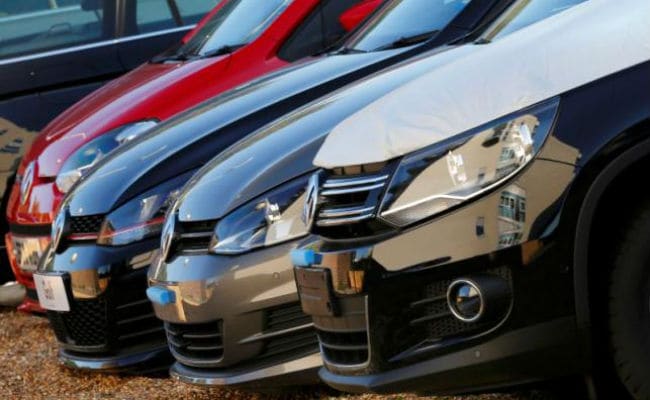
Virtually all car makers in the North American market reported a boost
The recovery in Texas and Florida from hurricanes Harvey and Irma, which destroyed hundreds of thousands of vehicles, helped the industry sell 1.52 million new cars, SUVs and light trucks, according to the tracking firm Autodata.
It was a dramatic reversal of the industry’s fortunes, after declines in every month this year, with hurricane recovery expected to continue to fuel growth in October and even in November.
Virtually all car makers in the North American market reported a boost — with sales up 2.7 percent from the month prior and 6.1 percent from September 2016, when auto makers experienced a record year capping seven years of growth.
“Demand across the spectrum was up,” said analyst Alec Gutierrez of Kelley Blue Book, emphasizing that smaller cars and sedans, as well as popular trucks and SUVs, sold well.
Houston a ‘truck market’
The seasonally-adjusted annual rate of sales climbed to 18.57 million, versus 17.72 million during the year-ago period, according to Autodata.
GM, the biggest US car maker, reported an 11.9-percent sales boost — with a 17-percent jump in Chevrolet models driven by its newest crossovers.
Ford sold 21.4 percent more of its popular F-Series pickup trucks, helping lift the company’s overall sales 8.7 percent.
The F-Series trucks are particularly popular in the Houston area, where Hurricane Harvey led to record-breaking flooding and more ruined cars than caused by Hurricane Irma in Florida, analysts said.
“Houston was the market that was most affected. We think it could be as high as 580,000 vehicles. And that is a truck market,” Michelle Krebs of Autotrader said.
Toyota had sales growth of 14.9 percent — with a skyrocketing 43.2 percent jump in SUV demand.
Fiat Chrysler’s American arm struggled, with sales declining 10 percent due in part to what the company said was a planned drawdown of fleet deliveries to businesses and government agencies. Its Jeep SUVs sold well, however.
‘Short-lived party’
Analysts cautioned that the good news would not last beyond a few months, and sales would settle into a slower pace later in the year.
“We can’t stress enough the impact of the hurricane,” Krebs said. “This will be a short-lived party.”
Another complicating factor was shoppers replacing hurricane-damaged cars with used vehicles instead of new ones. The used car market has a lot of inventory, thanks to recently-leased cars returning to dealerships.
“There are some growing headwinds from an increasing supply of gently used vehicles,” said economist Charlie Chestbrough of Cox Automotive, the parent company of Kelley Blue Book and Autotrader.
“The availability of these lightly used vehicles is likely holding down new car sales growth.”
Still, the short-term growth in September significantly helped almost every brand in the American market.
Asian brands Honda, Kia and Mazda reported gains, with Honda’s Civic sedan bucking the SUV trend to power a 6.8 percent sales boost. Kia’s Forte sedan was also a strong seller.
European car makers had mixed results. VW brand vehicles gained 33.2 percent, while Mercedes-Benz slipped 2.2 percent and BMW was down 0.4 percent, including sales of its MINI brand.
FCA US’s Fiat lineup of small cars continued to struggle, with sales dropping by 24 percent.
Electric car maker Tesla, which does not break out monthly figures, reported Monday a 4.5 percent increase in third-quarter deliveries compared to the year-ago period, despite a production “bottleneck” affecting its highly-anticipated mid-priced Model 3 sedan.












